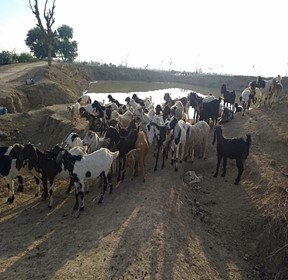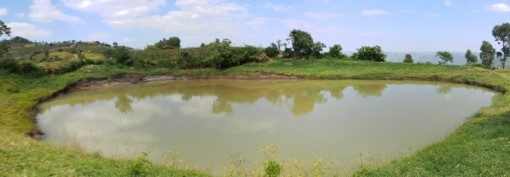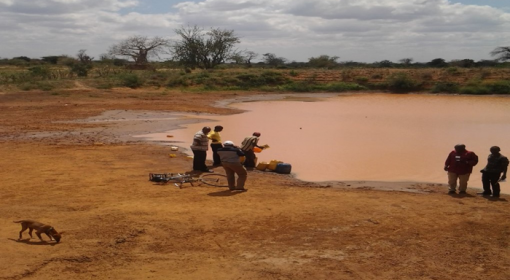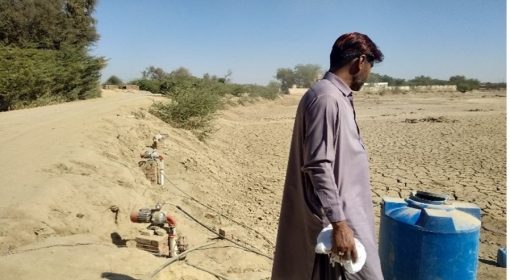Marijn van der Meer (MetaMeta), Femke van Woesik (MetaMeta), Nitesh Dhiman (PRADAN), Shubham Jain (MetaMeta), Lalit Kumar Nirmalkar (PRADAN), Laxmi Sharma (FES), Shubham Kushwaha (Aid Environment)
It is well known that large water bodies such as oceans and rivers affect the climate. Although to a smaller extent, ponds also impact the surrounding climate; the ‘local climate’. The opportunity here lies in the fact that, unlike large oceans and lakes, ponds are easier to create and to manage. With good management and design choices, ponds can be significant assets in creating conducive local climates in (agro)ecosystems. Simultaneously, ponds, when filled, are crucial water sources for agricultural practices.
Farm ponds serve as water harvesting structures that capture surface rainwater runoff to support protective irrigation during lean periods. These ponds have a proper inlet for collecting the surface runoff from its catchment and may have an outlet for delivering water downstream. Ponds thus play a significant role in the landscape and crop growth through irrigation water supply and local climate effects. This blog elaborates on how ponds can be an asset for agriculture. Moreover, it provides concrete and practical solutions to keep ponds full for a longer period of time. These solutions are presented in the context of a case study of the Dindori district, Madhya Pradesh, Central India. As a significant part of the cultivated areas in India are rainfed, farm ponds are of high importance for increasing crop production by increasing irrigation in these areas.

How ponds can create conducive local climates
Ponds can moderate the surrounding area’s temperature – reducing high and low extremes. The effects and sphere of influence of ponds differ according to the type of weather, the seasons, and the year. These effects were empirically measured in the Brenne in France; an area dotted with many small water bodies. The temperature differences between the pond areas and the surrounding lands were found to be relatively consistent in the order of 4–5°C higher in the winter, and a temperature decrease was found in summer, tapering off over the sphere of influence that extended from 100 to 200 meters around the water bodies[1]. This temperature buffering effect results from evaporation processes and head exchanges of the water body with the atmosphere. Water has an exceptional ability to receive and maintain heat. Additionally, wind over the pond can help cool areas near the water’s surface and increase humidity in dry areas. Given this capacity to buffer climatic variabilities, ponds are vital components to integrate into the fight against climate change[2]. On top of that, ponds also play an essential role in supporting biodiversity[3] and providing ecosystem services[4].
In managing the local climate, water bodies may be planned systematically with essential decisions on their size, depth, and distribution, as far as the local terrain allows. As the water bodies have a climate-regulating impact extending up to 200 meters around them, it can be assumed that a higher number of water bodies spread over a landscape has the most optimal effect on the local climate. The larger the water volume, the larger the protective buffer zone (e.g., lakes were found to protect from frost up to 5 kilometers[5]). The buffering effect might also be enhanced when water bodies are designed parallel to the prevailing wind direction. During the day or summer, the wind cools down while blowing over the water and brings a cooling breeze to the downwind area. Following the same temperature buffering principle, water bodies can be a critical factor in controlling frosts.
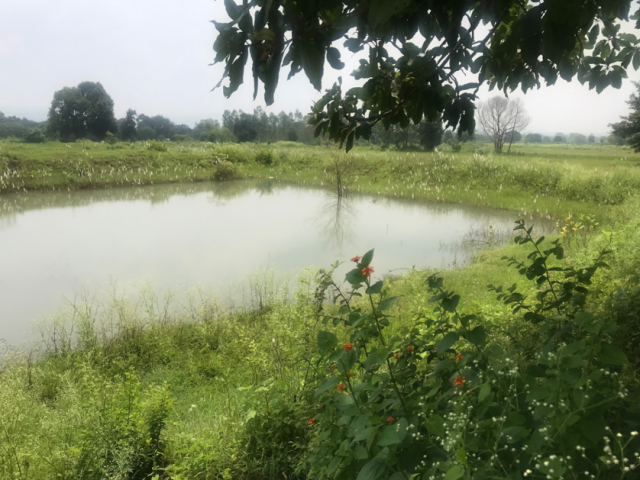
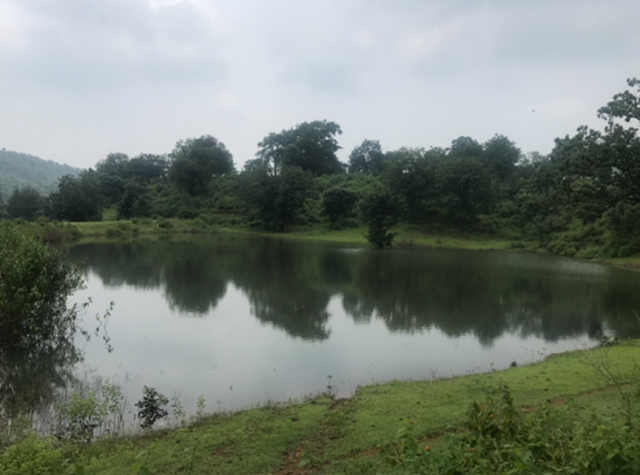
Also in the case area, the Dindori district of Madhya Pradesh, India, ponds are familiar sights in the landscape and are often used as a rainwater source for agriculture (Photos 1-3). The Central and State Governments of India have promoted farm ponds to secure agriculture through various subsidized schemes.
In Madhya Pradesh, three distinct growing seasons can be recognized:
(1) The Kharif season (monsoon period) is dominated by a large amount of rainfall which can get as high as 1000-1200 mm[1] (with extremes above). In this season, water-intensive crops like paddy are cultivated in the lower parts of the land, while the higher parts (upland) are sometimes used to grow crops like millet, niger, or maize. Ponds, when constructed correctly, start with the filling of water from the watershed area.
(2) After the harvest of the Kharif crop, the Rabi season starts. The Rabi season is characterized by cooler and dry air. Precipitation rates drop, as the average monthly rainfall shifts to 1-3 days[2]. Smaller ponds or ponds with extensive evaporation and seepage rates start drying up directly, leaving no irrigation possibilities for later in the season. Rabi crops like lentils can only be sown when soil moisture levels are not too high, but simultaneously soils should not get too dry during the season to stop crop growth. This situation results in a system that is sensitive to climate change. Buffering capacities, but also the availability of external water of ponds could help in risk management.
(3) Lastly, like the Rabi season, the Zaid season is dry yet warmer. In this season, almost all ponds dry up and often only fruits in homesteads are grown (when enough irrigation water is available).

How to keep ponds filled for a longer time
The longer farm ponds remain filled with water, the higher the irrigation and local climate buffering potential is outside Kharif season. In intervening to prolong the time that ponds are filled with water, there are two phases that require attention. The first phase is the construction and design phase, in which the location and characteristics of the ponds are addressed. The second phase focuses on reducing water losses from the ponds after these are constructed and filled during Kharif season.
The designing and planning of ponds
The pond’s location and characteristics are essential to have sufficient retention capacity. Factors in the site selection are soil type, infiltration rate, slope (topography), and drainage patterns. Together with surrounding vegetation and rainfall patterns in a particular village, these factors can help in the retention expectations of a pond. At all times, ponds should be located where most of the water within the catchment area drains. Besides, to prevent water shortfalls, the characteristics of the pond are important. Primarily, the volume (depth and width of the ponds, so in other words, the water capacity) is a big determinant. To prevent the rapid decline of pond volume, installing efficient silt traps at the inlet of farm ponds is crucial. Good design and planning of ponds will make taking care of water losses easier. In other words: ‘Well begun is half done’. An example for this is the relation between the volume size and the surface area of a pond, which is to say that for the same volume, a shallow pond (a large surface area) will have more evaporation than a deep pond (small surface area). With the right circumstances, a terraced pond could be interesting, as the surface area reduces when the water table lowers. This means that evaporation will decrease when the volume of the pond decreases. Additionally, the drained terraces usually contain high soil moisture, and can therefore be used for growing crops.
After installation: taking care of water losses
There are two main ways water leaves ponds:
(1) evaporation (through solar radiation and enhanced by wind speed) and
(2) seepage through the soil (dependent on soil properties of the edges and floor of the pond).
Please note that the latter can also be an asset as seepage recharges groundwater levels, which can serve as a moisture source for crop production, next to irrigation.
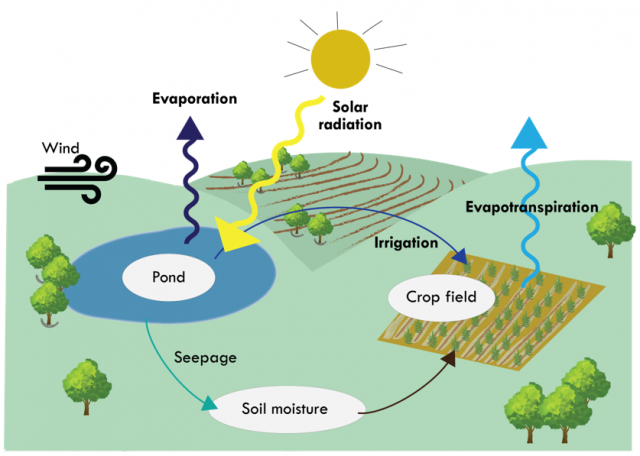
In a study conducted by Mahalle & Adhau (2014) in the Purna valley (Vidarbha district in Maharashtra, India, which has a similar climate as Dindori district), evaporation lowers the water table of unlined (no impermeable sheet along the edges and on the floor) farm ponds by almost 60 cm on average between October and December (Rabi season). In the same period, the losses due to seepage were nearly 13 cm[1].
Now that we know the two main modes of water loss from ponds we can think of ways to prevent this. In terms of seepage, a way to prevent this is to line the ponds (Photo 4). Here soil properties are important to take into account. Clayey soils like Vertosols allow negligible seepage, so lining of the pond is not a necessity for irrigation purposes[2]. Present coarse soils like Alfisols, on the other hand, may require lining to minimize seepage. But again, it should be noted that seepage can also contribute to the recharge of soil moisture levels. To maximize this effect, ponds could be placed higher than a crop field so that the soil moisture flows down towards the cropped area.
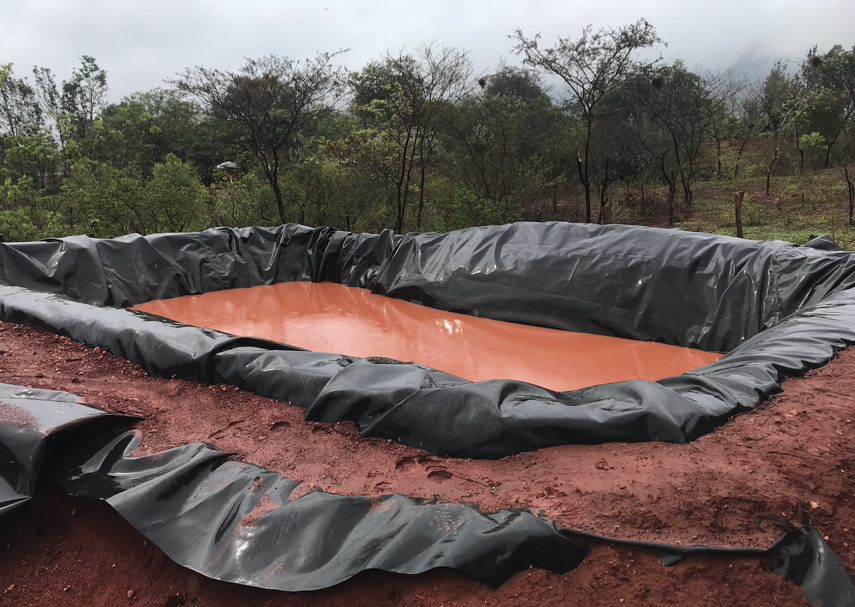
The second cause of water losses from ponds is evaporation, enhanced by solar radiation and wind speed. Several measures can be taken to decrease evaporation. In the next section, some examples are provided. Nevertheless, location and pond specific, other measures might be relevant.
Pond covers ( biological or physical) can help reduce the impact of solar radiation. There is a wide array of physical pond covers used. Some examples are floating modular covers such as aquacaps (Photo 5) or shade balls (Photo 6). Aqua Caps are round, dome-shaped floating modules of about 1.1 m in diameter. A study by Youssef & Khodzinskaya (2019) showed an evaporation reduction of 80% compared to uncovered water surfaces. A study in the Nehru pond in Namakkal district, India experienced a 43-45% reduction of evaporation in the reservoir as a result of shade balls[1]. Other possible types of physical cover include shade cloth installed over water surfaces using supporting poles and cables (Photo 7). This cover reduces wind action and blocks incoming solar radiation, thus reducing the evaporation rates from water surfaces. Shadecloth is used for small reservoirs. The main disadvantage of these physical methods is the relatively high capital costs for construction and materials. Also, production of these tools might have adverse environmental impacts[2].
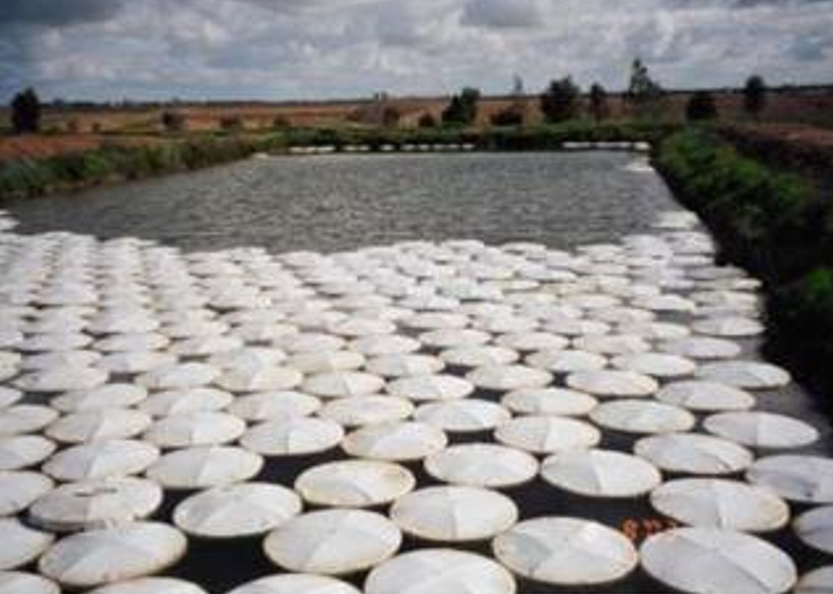
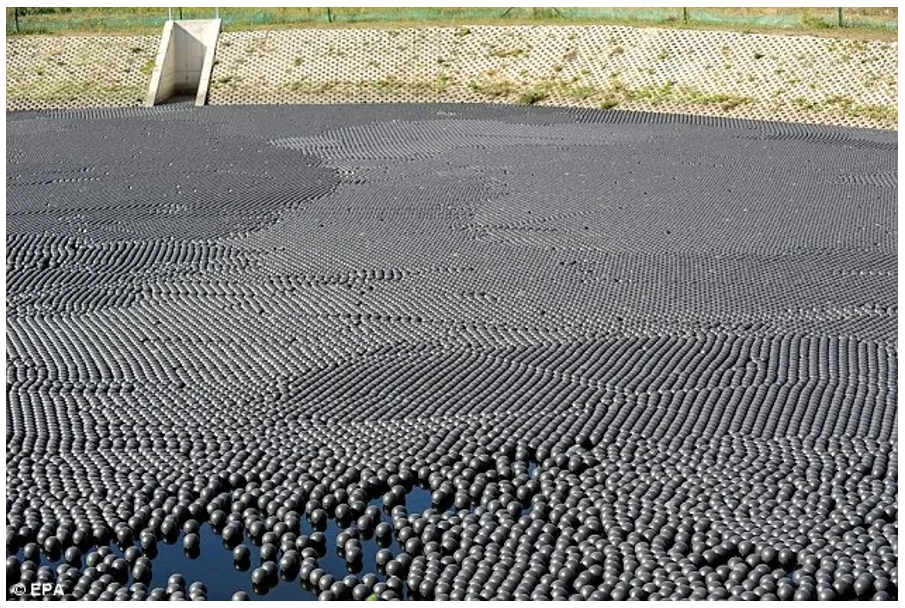
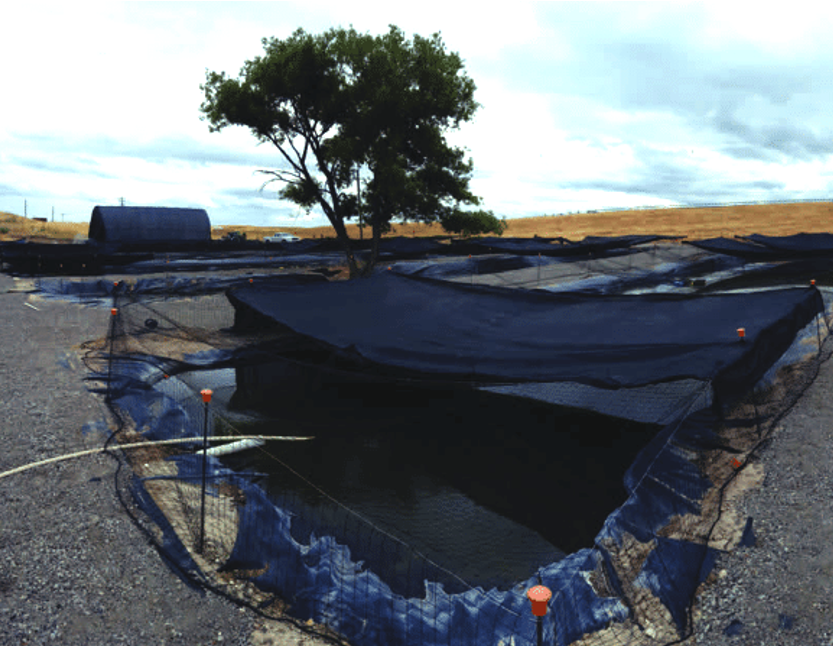
An easier and cheaper solution can be biological covers from locally available plants. In Saudi Arabia, for example, locally available palm fronds, a massive agricultural waste product and an environmentally friendly by-product, were used as a biological cover. A single layer of these palm fronds reduced evaporation up to 50%[1]. Depending on the locally available options, plant covers can be used instead of the physical barriers mentioned above. Next to plant cover, other biological solutions include the growth of aquatic plants or creepers over the pond. Aquatic plants were found to have an average evaporation suppression efficiency of almost 40%[2]. Important in choosing a fitting aquatic plant is the consideration of the plant’s effect on water quality (like eutrophication) and/ or flora dynamics, but also the water needs of the aquatic plant.
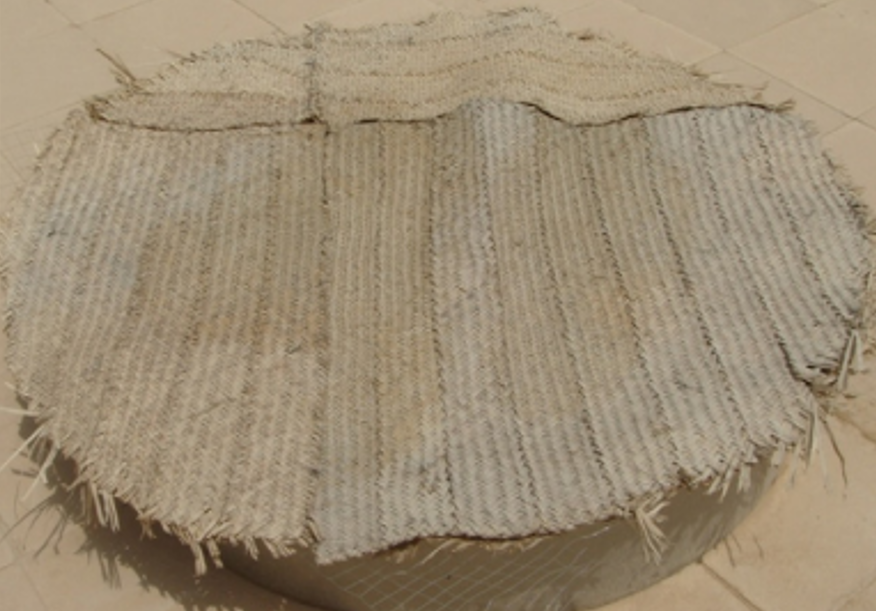
Most of the above-mentioned covers help in reducing evaporation caused by the sun. Wind is the other important factor causing high evaporation rates from water surfaces. Placing windbreaks can help reduce local wind speeds and decrease evaporation. The orientation, spacing and type of the tree/shrub are important in the set-up of windbreaks. A study conducted in Australia showed that well-designed wind shelters could reduce evaporation from open water bodies by 20-30%[1]. The key here is to design the shelterbelts in such a way that just enough air can penetrate through to prevent eddying on the lee side. Also, the vegetation used should be chosen carefully. When deciduous trees are used, the leaf index changes throughout the seasons, resulting in less windbreak effect in winter because of a low leaf index. This can be solved by, for example, planting multiple rows or using a combination of evergreen and deciduous species.
Another key factor in getting the most out of ponds as assets for agriculture is good maintenance. As mentioned above, the depth of the water bodies should be enough to prevent water shortfalls from maintaining optimal buffering results. Maintaining the water bodies and removing build-up sediment is thus important. Silt removed can also be used for fertilizer purposes as it has high nutritious value. An extra incentive for doing this maintenance, next to the irrigation water source, could be to keep fish in the pond as an extra income or to cultivate crops on the terrace banks. Figure 3 gives an overview of all measures discussed in this post.
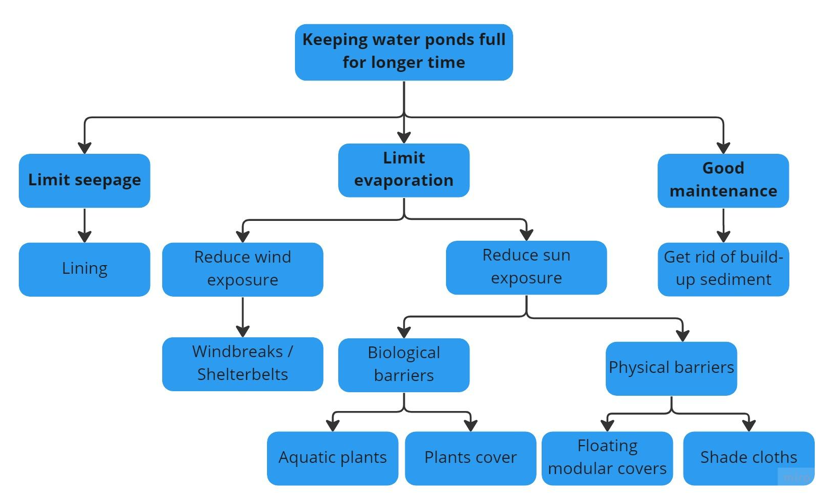
There is no single golden solution, instead, a combination of measures could lead to synergies. For example, planted trees could function both as a windbreak and as a shading mechanism. All in all, reducing evaporation prolongs the time ponds are filled with water, improving growing cycles starting from the Rabi season. This will eventually result in an increase in productivity and thus income security.
[1] Hipsey, M. R., Sivapalan, M., & Clement, T. P. (2004). A numerical and field investigation of surface heat fluxes from small wind-sheltered waterbodies in semi-arid Western Australia. Environmental Fluid Mechanics, 4(1), 79-106.
[1] Alam, S., & AlShaikh, A. A. (2013). Use of palm fronds as shaded cover for evaporation reduction to improve water storage efficiency. Journal of King Saud University-Engineering Sciences, 25(1), 55-58.
[2] Abdallah, A. M., Parihar, C. M., Patra, S., Nayak, H. S., Saharawat, Y. S., Singh, U., … & Shalaby, M. M. (2021). Critical evaluation of functional aspects of evaporation barriers through environmental and economics lens for evaporation suppression-A review on milestones from improved technologies. Science of The Total Environment, 788, 147800.
[1] Youssef, Y. W., & Khodzinskaya, A. (2019). A review of evaporation reduction methods from water surfaces. In E3S web of conferences (Vol. 97, p. 05044). EDP Sciences.
[2] Haghighi, E., Madani, K., & Hoekstra, A. Y. (2018). The water footprint of water conservation using shade balls in California. Nature Sustainability, 1(7), 358-360.
[1] Mahalle, Y. R., & Adhau, G. W. (2014). Study of evaporation and seepage losses from farm ponds in saline areas. International Journal of Agricultural Engineering, 7(2), 402-409.
[2] Rao, Ch. S., Rejani, R., Rao, C. A. R., Rao, K. V., Osman, M., Reddy, K. S., Kumar, M., & Kumar, P. (2017). Farm ponds for climate-resilient rainfed agriculture. Current Science, 112(3), 471–477. http://www.jstor.org/stable/24912425
[1] Dindori Climate, Weather By Month, Average Temperature (India) – Weather Spark. (n.d.-a). https://weatherspark.com/y/110378/Average-Weather-in-Dindori-India-Year-Round
[2] Climate Change Dindori. (n.d.). Meteoblue. Retrieved 6 October 2022, from https://www.meteoblue.com/en/climate-change/dindori_india_1272540
[1] Nedjai, R., Azaroual, A., Chlif, K., Bensaid, A., Al-Sayah, M., and Ysbaa, L. (2018) ‘Impact of ponds on local climate: a remote sensing and GIS application contribution to ponds of Brenne (France),’ Journal of Earth Science and Climate Change 9(12)
[2] Rosset, V., & Oertli, B. (2011). Freshwater biodiversity under climate warming pressure: Identifying the winners and losers in temperate standing waterbodies. Biological Conservation, 144, 2311–2319.
[3] Hassall, C. (2014). The ecology and biodiversity of urban ponds. Wiley Interdisciplinary Reviews Water, 1(2), 187–206.
[4] Miracle, M. R., Oertli, B., Céréghino, R., & Hull, A. (2010). Preface: Conservation of European ponds-current knowledge and future needs. Limnetica, 29(1), 1–8.
[5]Louka, P., Papanikolaou, I., Petropoulos, G.P., Kalogeropoulos, K., and Stathopoulos, N. (2020) ‘Identifying spatially correlated patterns between surface water and frost risk using EO data and geospatial indices’, Water 12(3): 700
